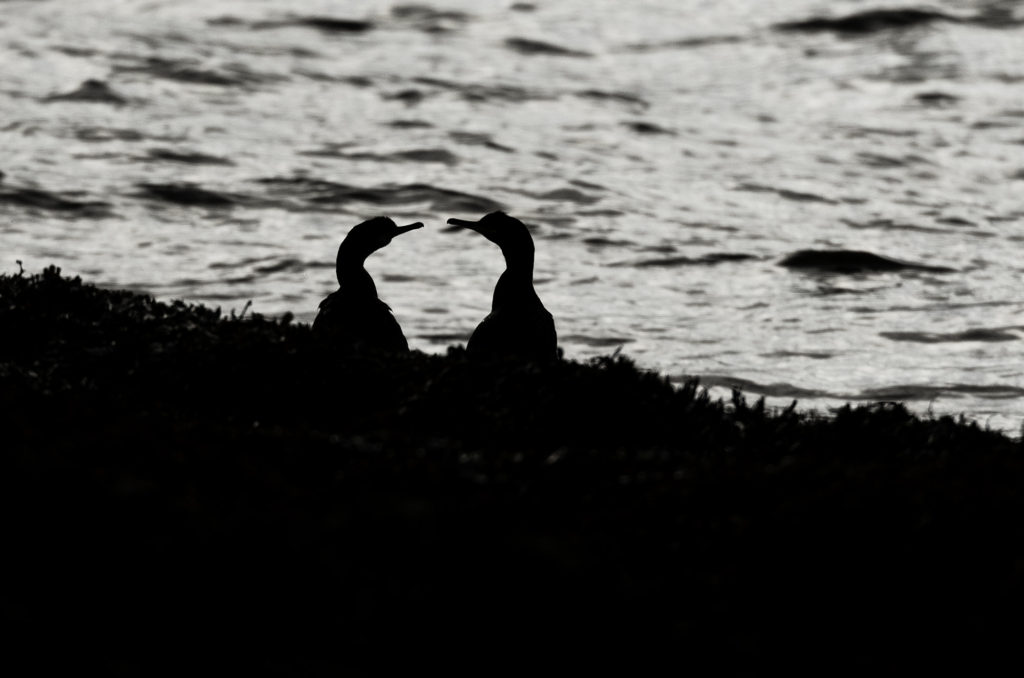On a recent walk around Ardmore Point, we were lucky to be able to spend time with stunning, and prehistoric-looking, shags. This juvenile was quite happy being photographed on the seaweed while a couple of other birds bobbed a short distance away in the water. I sat still on a nearby rock and photographed this bird, which I have since discovered is a first-year juvenile. Unfortunately, the sun that threatened to make an appearance did not arrive before the shag stirred itself and flew away with the other birds.
I have struggled with telling the difference between cormorants and shags but, thanks to some advice from the British Trust for Ornithology, I am now feeling a bit more confident when it comes to these first-year birds. When identifying the younger birds, it is important to remember the structural features. In shags this is the thinner bill and steeper forehead as well as their slenderer body shape. Also, first-year shags have the largely yellow bill and white chin patch.
Shortly after this encounter, I spotted a pair and couldn’t resist capturing a silhouette. I kept shooting to ensure I got the moment where they faced each other, and the image below was the result.

In this image you can see the small crest on the head of the bird on the right, which is where this species gets its name – ‘shag’ is an old word that means ‘tufted’. The crest is one of the ways you can differentiate a shag from a cormorant. Another is the steep forehead of the shag, which you can also see in this silhouette.
In the UK shags mainly breed on coastal sites in the north and west of the country. Sadly, they are a Red List species because more than half of their population is found at fewer than 10 sites.

